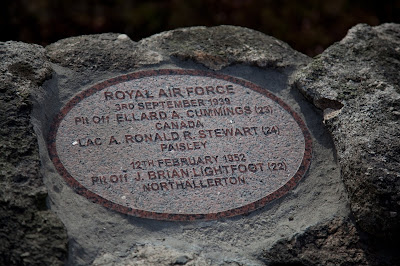PLACE OF ORIGIN – by Duncan Harley
One such landscape feature is Place of
Origin in the village of Kemnay. Conceived as a piece of landscape art and
officially opened by HRH the Duke of Kent in 2006, the sculpture addresses the long
and important history of granite quarrying in Aberdeenshire.
In its heyday, the quarry at Paradise Hill employed 400 men with much of the quarried stone going to make iconic structures such as Sydney Harbour Bridge and Marischal College in Aberdeen.
Ten years in the making, the Place of Origin artwork takes the form of a series of woodland walks and stone built features culminating in a high vantage point where visitors can appreciate the sheer scale of the old quarry workings within the surrounding landscape.
The viewpoint is constructed using some 100,000 tonnes of quarry waste at Kemnay’s Paradise Hill and draws inspiration from the various recumbent stone circles in the local landscape.
John Maine was one of the artists involved in the project and he comments that “The underlying idea of Place of Origin was to lead people to a vantage point from which the Kemnay quarry would be revealed. In order to let viewers see the drama of the quarry without actually being exposed to the dangers of granite cliffs, we built a hill with a viewing platform high above the quarry workings.”
The vantage point was created with the help of huge trucks and giant cranes, “We would set out a circle of quarry blocks and then fill the middle with granite chippings. This final stage is therefore granite through and through.”
Amongst the quarry waste the artists discovered a collection of jet-black stones identified as having come all the way from India. Imported in order to provide an architectural highlight for the façades of otherwise grey granite buildings, these blocks now line the path leading to the top of the viewpoint symbolically fulfilling their original function as a foil for the granite structure whilst also providing a welcome seat for the weary.
The artists involved suggest that Place of Origin shares an aesthetic with a Japanese garden in that it reflects the larger landscape it sits in. They were however startled when it became apparent that they had unwittingly created a landscape, which viewed from the air, took on a completely unexpected form. Images from above clearly show that the paths connecting the various elements of the vast sculpture closely resemble the sorts of patterns carved by Pictish sculptors on the various symbol stones found in the area.
The artists had never planned to create a path network based on such imagery since it would, they felt, have seemed contrived.
Local lore insists that the giant sculpture is visible to astronauts manning the Space Station. However, I am not completely convinced.
In its heyday, the quarry at Paradise Hill employed 400 men with much of the quarried stone going to make iconic structures such as Sydney Harbour Bridge and Marischal College in Aberdeen.
Ten years in the making, the Place of Origin artwork takes the form of a series of woodland walks and stone built features culminating in a high vantage point where visitors can appreciate the sheer scale of the old quarry workings within the surrounding landscape.
The viewpoint is constructed using some 100,000 tonnes of quarry waste at Kemnay’s Paradise Hill and draws inspiration from the various recumbent stone circles in the local landscape.
John Maine was one of the artists involved in the project and he comments that “The underlying idea of Place of Origin was to lead people to a vantage point from which the Kemnay quarry would be revealed. In order to let viewers see the drama of the quarry without actually being exposed to the dangers of granite cliffs, we built a hill with a viewing platform high above the quarry workings.”
The vantage point was created with the help of huge trucks and giant cranes, “We would set out a circle of quarry blocks and then fill the middle with granite chippings. This final stage is therefore granite through and through.”
Amongst the quarry waste the artists discovered a collection of jet-black stones identified as having come all the way from India. Imported in order to provide an architectural highlight for the façades of otherwise grey granite buildings, these blocks now line the path leading to the top of the viewpoint symbolically fulfilling their original function as a foil for the granite structure whilst also providing a welcome seat for the weary.
The artists involved suggest that Place of Origin shares an aesthetic with a Japanese garden in that it reflects the larger landscape it sits in. They were however startled when it became apparent that they had unwittingly created a landscape, which viewed from the air, took on a completely unexpected form. Images from above clearly show that the paths connecting the various elements of the vast sculpture closely resemble the sorts of patterns carved by Pictish sculptors on the various symbol stones found in the area.
The artists had never planned to create a path network based on such imagery since it would, they felt, have seemed contrived.
Local lore insists that the giant sculpture is visible to astronauts manning the Space Station. However, I am not completely convinced.
Duncan Harley is author of two
books about Aberdeenshire. Both titles, The Little History of Aberdeenshire and
The A-Z of Curious Aberdeenshire, are available from Amazon.











Comments
Post a Comment